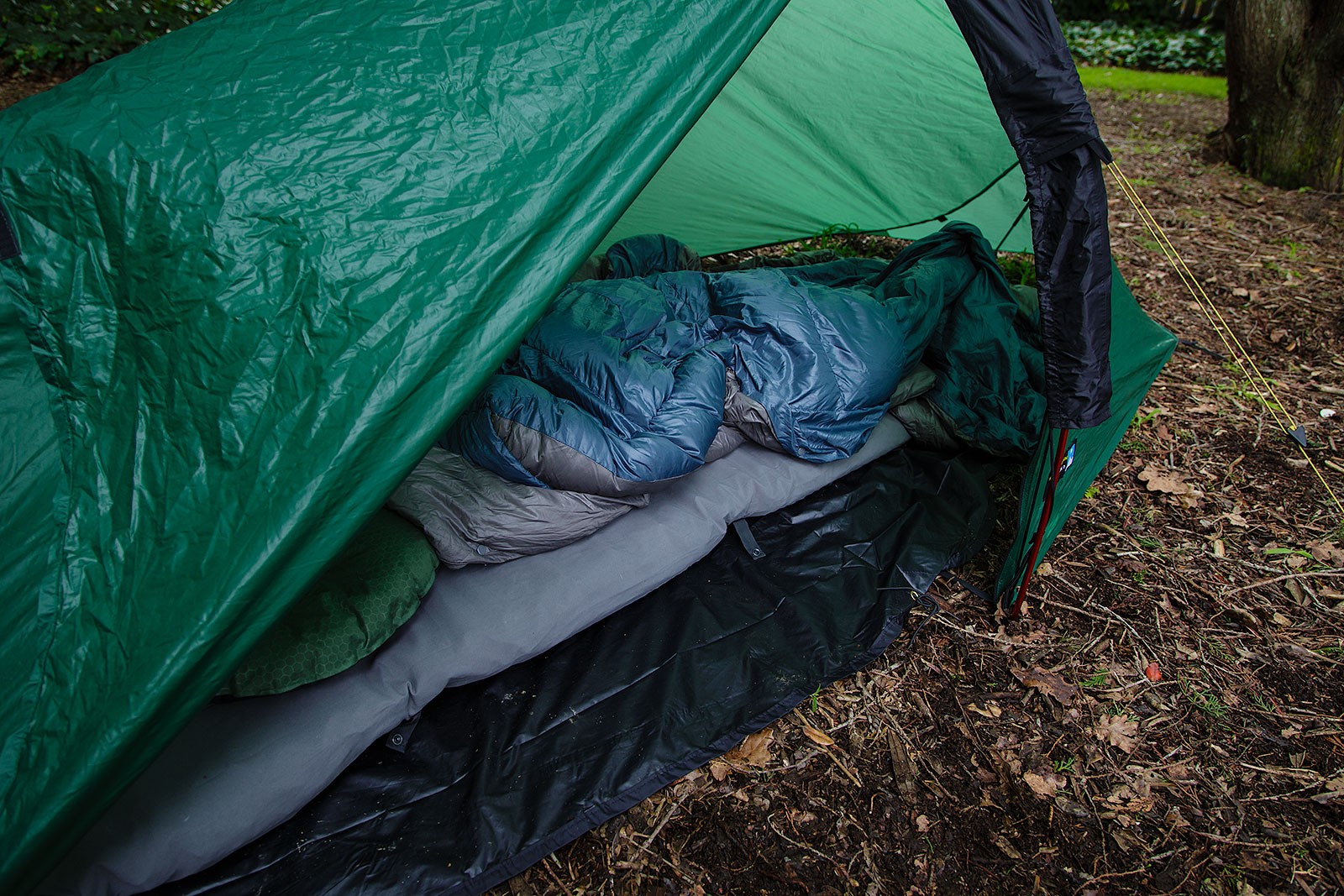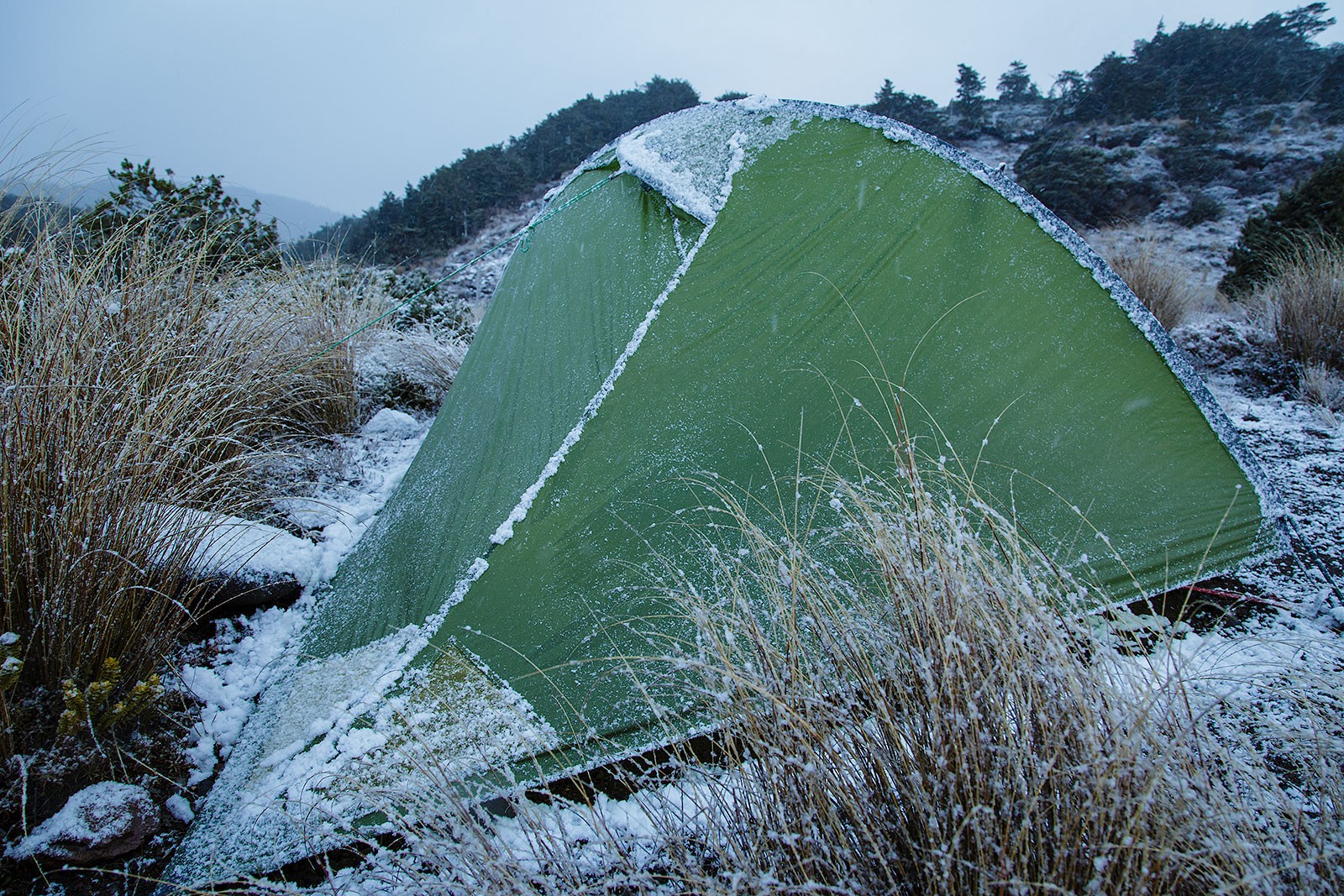Single-walled Tents / Flys / Tarp Tents
I wasn’t quite sure what to call this article – as there are really several different systems that fall into this category. For the purposes of the post though, we are talking about shaped shelters that often are still utilising poles, guy lines and tent pegs to keep them up.
Many Double Walled Tents1 can have their inner mesh layer removed – leaving you with the fly, or a single-walled tent. Some of these will have the bathtub style floor permanently sewn in, and some will have them separate – like the Photon.
Specifically, in the case of the Terra Nova Laser Photon 1, you can get the Fastpack system instead – which is essentially a floor that will sit under your sleeping mat/roll and keep you dry underneath. The fly, by itself only weighs 355 grams, so you can start to see it’s potentially a very light shelter.
Floors or Bivy Bags?
The other option you have with a single-walled tent is going without a floor as such, and instead of putting your sleeping bag into a lightweight bivy bag. I am going to cover bivvies more another article – but essentially in this case you are using them like a sleeping bag cover – keeping them away from any moisture on the ground, as well as any splashback you might get from around the edges of the tent during heavy rain. Regardless, the goal is to keep the sleeping bag dry.
Weather, Condensation and Airflow
Be it in the form of just using the outer layer of a double system, or a specifically designed single-wall tent, where they do differ from a simple tarp is that they are generally going to be shaped to give you peaks and vestibules – as well as often having mesh panels to help the air keep moving through.
This shaping is going to help when the weather gets rough – having some form of aerodynamics is going to help keep the rain and the wind out, providing more shelter when the weather gets nasty. In addition, vents mean air can keep on moving through the inner space (in a controlled manner) so that condensation doesn’t have a chance to form, potentially meaning you wake up in the middle of the night with it raining on the inside of the shelter.
Advantages
- Generally quick to set up
- Venting allows for good control of condensation
- The living area of the tent stays dry when pitched in the pouring rain
- Aerodynamic shapes provide good wind resistance
- Fast drying
Disadvantages
- If the mesh doesn’t completely close up – you may have bugs
- Won’t be as warm as a double skinned tent
- You need to be aware of where you pitch – they have the potential to flood more as the floor isn’t always a full bathtub style
Best Used When…
- You have a flat site to pitch the tent on
- Not the middle of a storm, up to moderate winds
- Great when you want to travel light
- You are wanting to get out of a full tent, but maybe not ready to go to a traditional tarp
like the previously mentioned Terra Nova Laser Photon 1 ↩




